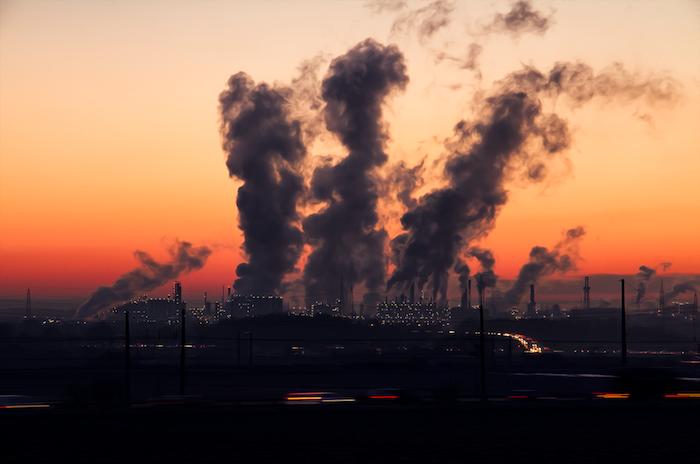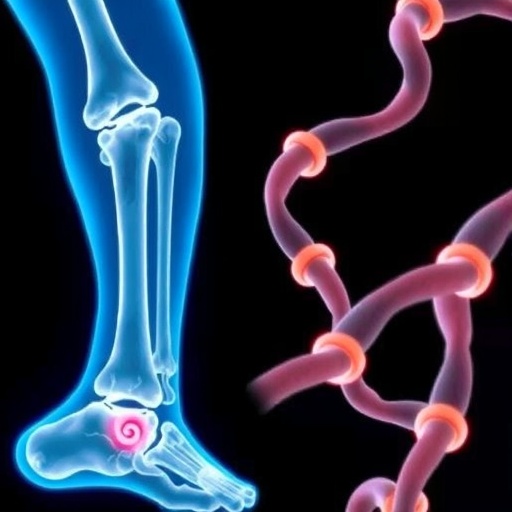Disenfranchised, minority neighborhoods still exposed to disproportionately high levels of health harming nitrogen dioxide

Credit: GW
WASHINGTON (July 20, 2021)–A new study of COVID-19 shutdowns in the United States reveals pronounced disparities in air pollution — with disenfranchised, minority neighborhoods still experiencing more exposure to a harmful air pollutant compared to wealthier, white communities. This first-of-a-kind study published today by researchers at the George Washington University looks at how air pollution changed after schools and businesses shut down in March 2020 in attempts to curb the spread of COVID-19.
“New York and other major urban areas had cleaner air as many commuters and others stayed off the roads,” Gaige Kerr, the lead researcher on the study and a research scientist at the GW Milken Institute School of Public Health, said. “At the same time, our study shows that an air pollutant called nitrogen dioxide was still disproportionately higher in marginalized, mostly Latino and Black neighborhoods.”
Nitrogen dioxide is formed when fossil fuels such as coal, oil, gas or diesel are burned at high temperatures. Cars, trucks and buses are the largest source of nitrogen dioxide emissions in urban areas followed by stationary sources, including power plants and factories.
With support from NASA, the researchers used data from a recently launched satellite orbiting the earth called the TROPOspheric Monitoring Instrument, along with ground measurements of pollution, to estimate nitrogen dioxide levels both before and after COVID-19 shutdowns. This method allowed the researchers to zoom in and compare one neighborhood’s pollution level to another in urban areas throughout the U.S. They then used demographic data to compare how nitrogen dioxide levels changed for different population sub-groups.
While previous studies have documented the inequity in air pollution exposure using models or spatially limited networks of ground monitors, this study relied on both observational and spatially complete satellite data to reveal how these inequities persisted during the unparalleled changes in human activity during COVID-19, the authors said.
The team found that changes in human activity during the COVID-19 pandemic, largely less passenger vehicle traffic, resulted in lower nitrogen dioxide levels among the vast majority of urban areas.
Yet even that sharp decrease was not large enough to eliminate the racial, ethnic and socioeconomic disparities in exposure to this traffic-related pollutant. Marginalized, minority communities still experienced nitrogen dioxide levels during the shutdowns that, in some cities, were 50% higher than pre-pandemic levels in the nearby highest income and mostly white communities, Kerr said.
The researchers linked the biggest drops in nitrogen dioxide pollution during COVID-19 shutdowns to a community’s proximity to highways and interstates. Kerr says that marginalized urban areas are also more likely to be located near interstates, where traffic is responsible for a large portion of urban nitrogen dioxide pollution and other forms of pollution.
For example, in New York, the largest reductions in nitrogen dioxide were found near the convergence of the George Washington Bridge and Major Deegan Expressway, an area that also has a heavy concentration of industries. The largest drops in Atlanta were located in the southwest part of the city near the airport and several major roadways. In Detroit, the biggest reduction in nitrogen dioxide occurred on the west shores of the Detroit River, where several interstates and the Ambassador Bridge, a busy U.S.-Canadian border crossing, come together. While passenger vehicle traffic dropped on these highways, heavy-duty trucking was less affected by the pandemic, and, along with other emission sources, continued contributing to high pollution levels in nearby communities.
Previous research by the senior author of the paper, Susan C. Anenberg, an associate professor of environmental and occupational health at GW, shows that nitrogen dioxide triggers millions of serious asthma attacks worldwide and may cause children to develop asthma for the first time.
Other evidence indicates that exposure to air pollution, including nitrogen dioxide, may increase the likelihood of people getting very sick or dying from COVID-19. Researchers also know that COVID-19 disproportionately strikes minority communities.
“With new satellite data, we can actually observe how pollution levels differ between neighborhoods within cities and track changes over time,” Anenberg said. “Our research shows how individual behavior change won’t solve environmental injustice. We need long-term policy solutions to reduce emissions and help keep people healthy, especially those living in disadvantaged neighborhoods.”
Policies aimed at reducing traffic related emissions — such as public transportation and widespread use of electric cars — may not be enough to reduce the nitrogen dioxide pollution in disenfranchised, minority neighborhoods, the authors note. Policymakers who want to reduce the disparities in air pollution across demographic subgroups should also target other sources of pollution that are found in disadvantaged neighborhoods, such as heavy-duty trucking.
“This study shows that an unparalleled pandemic and an unprecedented drop in emissions were not large enough to clean the air for poor, minority neighborhoods,” Kerr said. “Urgent action is need to reduce or eliminate these disparities, protect public health, and advance environmental justice.”
###
The study, “COVID-19 Pandemic Reveals Persistent Disparities in Nitrogen Dioxide Pollution,” was published online July, 20, 2021 in the Proceedings of the National Academy of Sciences. In addition to Kerr and Anenberg, the research team included Daniel L. Goldberg, an air quality scientist also at GW.
Media Contact
Kathy Fackelmann
[email protected]
Original Source
https:/
Related Journal Article
http://dx.





